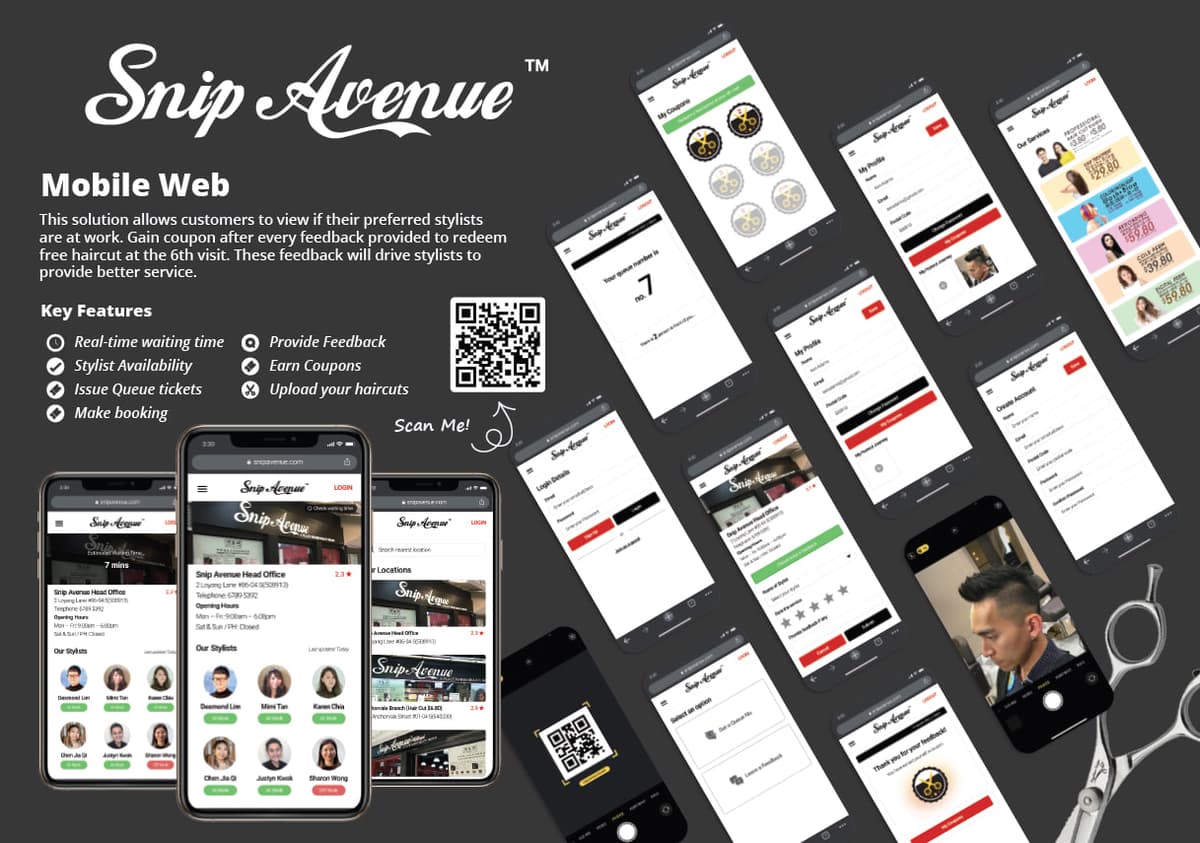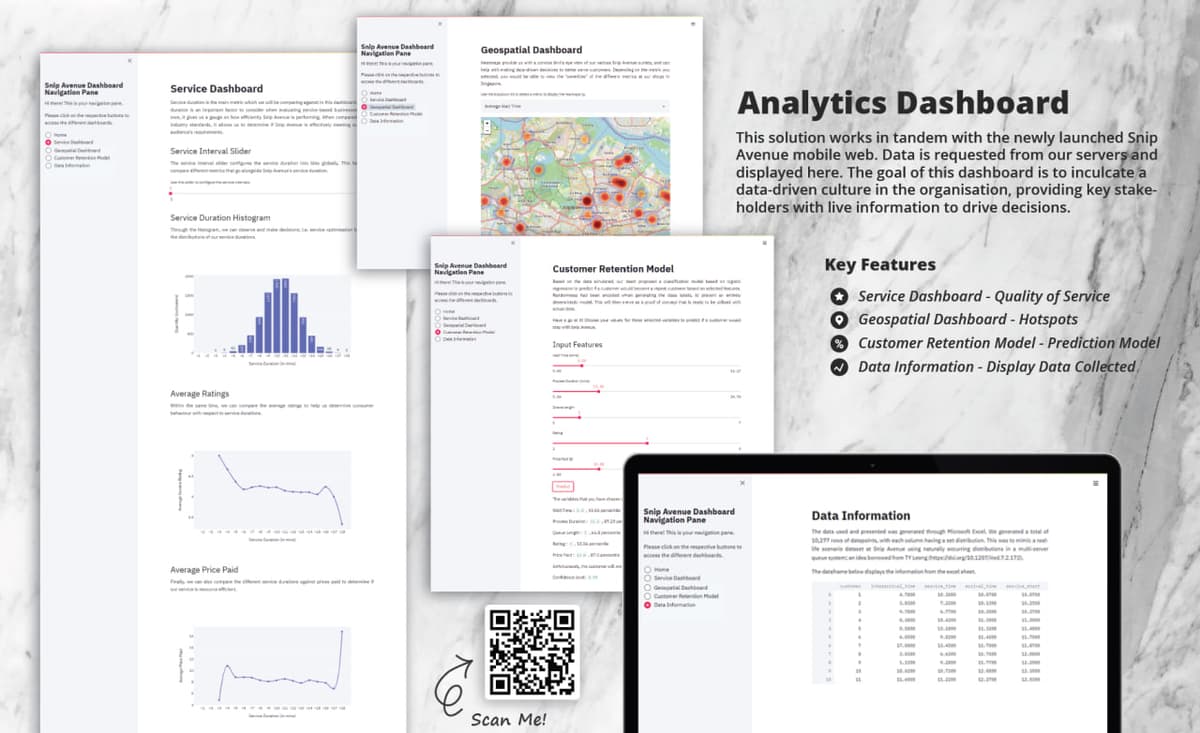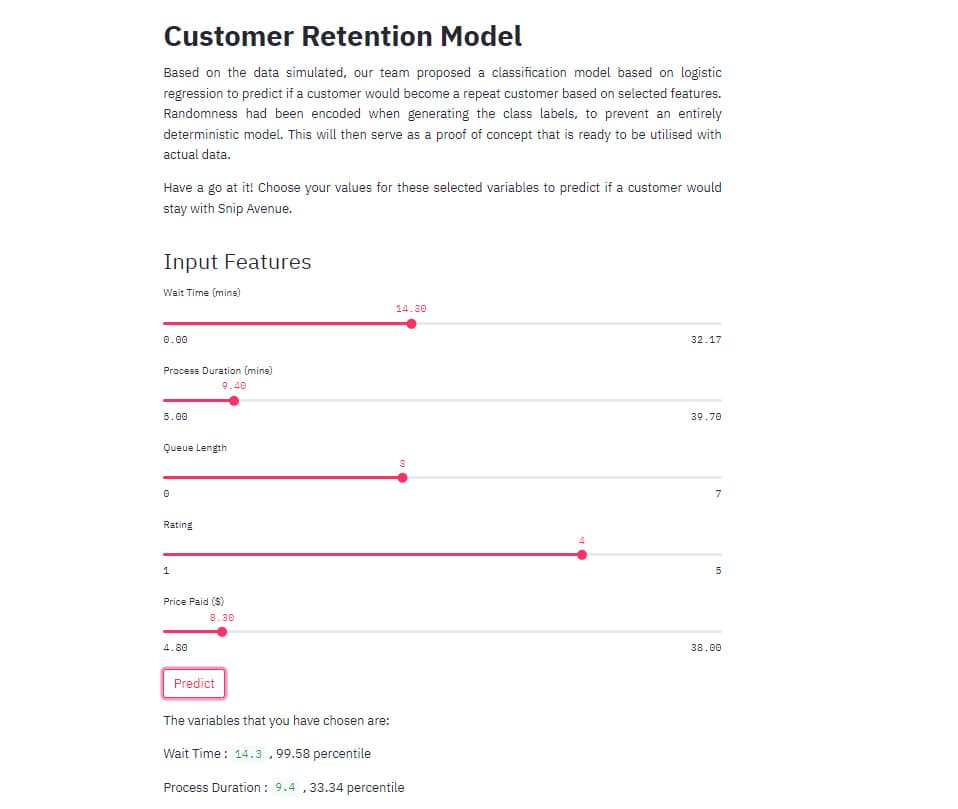Snip Avenue Digital Transformation Plan
Digital transformation strategy
Jan 2022 - May 2022
Skills: Python • Analytics • Streamlit API • Figma • Digital Transformation Strategy
Coursework Project
5 min read
This project was done as part of a module IS215 - Digital Business, Technologies and Transformation (DBTT) in SMU.
The main outcome of this project was to allow students to formulate a digital transformation strategy on an existing company or organization, or a new initiative with a societal or national impact.
We chose Snip Avenue, a hair salon franchise as our case study for this project, aiming to forumulate a digital transformation strategy for the organization with the help of analytics, web, and mobile technology.
Relevant links can be accesed here:
- Figma prototype
- Analytics dashboard application deployed on Streamlit : Dashboard analytics are based on mock data, and acts only as a proof of concept.
- Analytics dashboard source code
Analysis of the organization was mainly done using the Strengths, weaknesses, opportunities and threats (SWOT) analysis framework and Michael Porter’s Five Forces.
The SWOT analysis helps organizations develop a full awareness of all the factors involved in making a business decision. The following is our (simple) SWOT analysis on Snip Avenue.

Relative to other competitors, Snip Avenue has the edge by having a more established name, as well as having more resources. However, it trails in areas such as having poor customer service and outdated business processes.
Michael Porter’s Five forces are namely
- Rivalry among existing competitors
- Threat of new entrants
- Bargaining power of suppliers
- Bargaining power of buyers
- Threat of substitute products

We narrowed our analysis to two of the five forces, namely -
In the budget range, there are some competitors, although Snip Avenue easily takes the lowest price. Examples of competitors include ecoin.sg and Kimage hairdressing school, among many others.
Power of buyers is high among fuss-free customers who are looking for cheap cuts. Substitutability of haircut service is high, and switching costs are low.
Competitors were adopting an omnichannel strategy, differentiating themselves from the rest mainly using custom applications, which were packed with features for convenience and customer lock-in.
At it’s core, Snip Avenue was lagging behind due to it’s inefficient processes, which wre largely manual and paper-based. There was a lack of franchise-wide standardization, which led to inconsistencies and longer time taken to complete a transaction, which resulted in a negative customer experience.
Our team’s proposed solution centrals around two key actions - developing and integrating an application into the business process, and adopting a data-driven decision making approach.
Since the focus of this module is not on development, only a prototype was created. The link for the figma prototype can be found here.

The main motivation for developing an application was to create a smoother and hassle-free experience for customers. This also allows the company to move away from paper-based processes digitizing their records and data, and digitalizing their appointment booking process.
However, to proceed with this implementation, it will require efforts to ensure customer and employee buy-in , and of course, there is also the cost of implementation and maintenance of the application.
We also proposed an analytics solution so that the company can adopt a more data-driven approach when making business decisions. Most of the work done here were by my teammates, Kok Wee and Biondi.

Again, this was more of a proof-of-concept prototype, and hence the data used for this application were mocked up using excel.
Within the analytics prototype, we also have a simple logistic regression model implemented to predict whether a customer will repeat a transaction based on certain features input within the model, such as
- Wait time (in mins)
- Process duration (in mins)
- Queue length: number of people in the queue when customer gets their queue ticket
- Rating: customer’s rating on the transaction
- Price paid for service (in $)

Overall, really insightful module and it definitely achieved it’s learning outcomes of
- Evaluating opportunities and challenges of different digital technologies
- Analysing digital transformation case studies
- Ideate how an existing organization can become digital, and formulate a digital transformation strategy accordingly
Personally, I tend to lean towards modules that are more technical and development-based, but this module really shows me how an end-to-end digital transformation strategy would look like, focusing not just on technical solutions, but also business considerations and design.
This really wraps things up nicely and I was able to have a clearer, fuller picture on what goes on in a business, and would definitely help me gain an understanding on the how’s and why’s that goes into developing a product for a business.